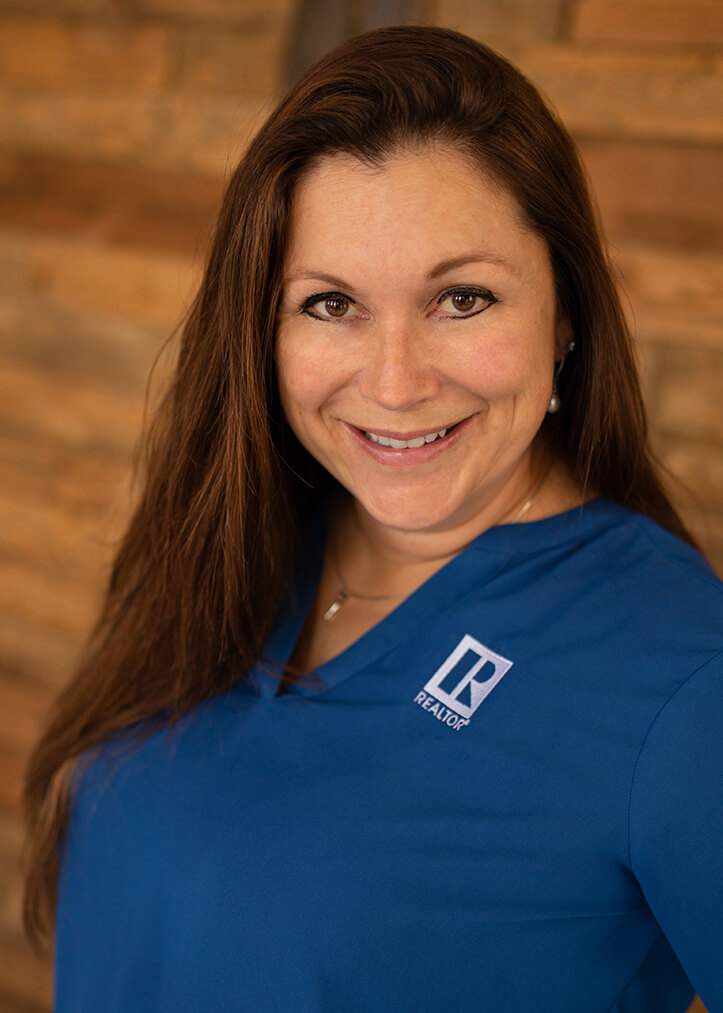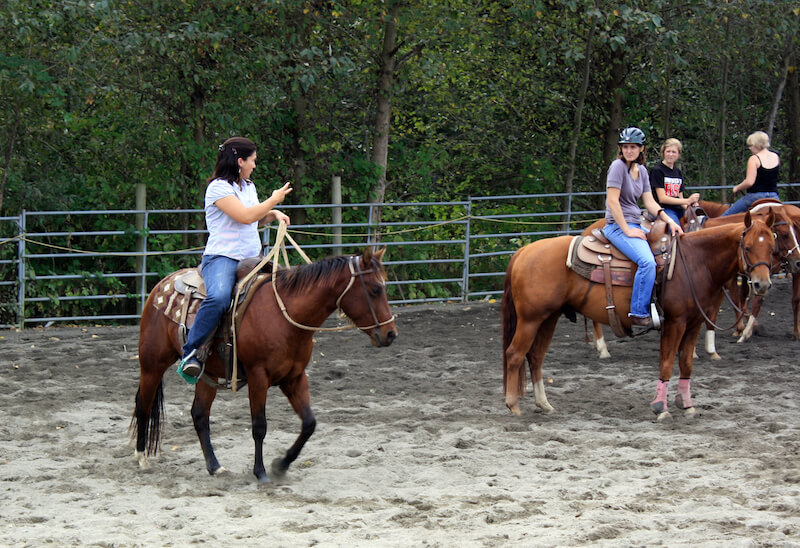Complicated Maneuvers Have a Basic Foundation
by Allison Trimble

All training, cues and communication with your horse is based on the concept of pressure and release. Whether it is something as simple as walking a circle or as complicated as sliding stops and lead changes, the philosophy is the same. A horse’s natural instinct is to resist or to push back into pressure. The first time you halter a horse, they pull against the halter. The first time you put a finger to their side to ask them to move over, they will push back into your finger. Our job as the horse’s educator is to teach them to yield to pressure. Pressure is applied, and escalated, until they yield and earn a release. The horse learns to look for the release of pressure as relief. This will be the foundation for all future training.
I know that to a lot of you this seems like a very basic concept. You’ve heard it before. What I have found is that most people forget about this when they move into more complex training. Once there is the task of completing a maneuver such as a spin, or a lead change, people think that the cues must be complex. I am a huge advocate of simplicity in training. I have seen time and time again these weird affectations of body position once someone is “maneuvering.” People begin to do things that are inconsistent with what they have taught their horse up to this point and can lose track of the impact they are having on the horse. Even a “complex” motion is simple in theory. This is where I encourage you to see each maneuver through the eyes of your horse.
A perfect example of this is the turn-around. A spin is as simple as steering a horse’s shoulder around its hind end. If your horse is steering properly, it will turn around to the best of its athletic ability. As the horse learns to step around to each time you steer, you begin releasing the pressure and they hunt that turn-around and the release of pressure. People make it so complicated. Push the horse’s hip in, side pass, move one leg forward and one leg back. The most common example of this is someone “opening the door” with their inside leg. In theory I understand this idea, but in the application what happens is that people rock back onto their outside hip and kick their inside leg up and in front of the horse’s shoulder. This should be stopping the motion of the horse’s shoulder that direction. If I move my foot forward to my horse’s shoulder, I would be asking it to move its shoulders the opposite direction, away from the pressure, or presence, of my foot. So, two things are happening to the door-opening-spinner: They are blocking their horse from turning that direction and, because a horse learns so quickly, it will begin to turn that direction despite the presence of the rider’s foot. This deadens and diminishes the pressure/release understanding in your horse. You have started to blur the lines, and it will leak into your entire training program.
I preach this regularly to my clients: EVERYTHING IN HORSE TRAINING IS INTERCONNECTED.
From the moment you walk into your horse’s pen to catch him, until the moment you turn him back out, you are training or un-training your horse. You must have a holistic approach to your horsemanship and training. Horses do not reason and they do not connect the dots. They are animals that react, and we are able to condition their reactions to a consistent stimulus. This is what horse training is all about. What you do loping circles affects your stops. How you approach turn-arounds affects your cow work. It is crucial that you solidly grasp that your cues must be concise, decisive and most of all consistent. A cue must always mean the same thing to your horse, without fail. You must always remember that your cues should be based firmly on the simple concept of pressure and release.
Published November 2011 Issue

Allison Trimble is a Realtor® specializing in equestrian properties, farm and ranch properties, and residential real estate. She’s a former horse trainer, and a current owner, breeder, and non-pro competitor in cow horse and reining events. For many years, Allison wrote a monthly column for The Northwest Horse Source.
Learn more at www.allisonblakerealestate.com






